Although Vietnamese is a tonal language which Europeans tend to find fiendishly difficult, some phrases are surprisingly easy to read. Go ahead, say it as it looks and should you encounter a passing Vietnamese they will be delighted and repeat the wish back to you. Chuc mung nam moi. Daughter No 1 was saying it to everyone and getting smiles left, right and centre.
I was a bit more circumspect about trying Vietnamese, not being sure of getting it right and having in mind the story of a friend’s mother who was visiting her son, a researcher in the British embassy in Moscow. She was told that hello in Russian – zdravstvuyte – could be fairly accurately rendered by saying ‘does your arse fit you’ very quickly. Lost in Red Square, she confidently approached a Russian policeman and, in a moment of confusion came out with the unfortunate ‘Goddam your arse”. Happily, the words were understood in neither Russian nor English and she went on her way but this story has remained with me as a salutary lesson in how easy it is to get things wrong.
With these blog posts on Vietnam I am going to try to avoid “and then we did this …” approach which would bore you to death reading it and me to death writing it. Instead I shall focus on a few themes that made us go ‘ping, why did I never know about this before?’ and brought joy to our trip as we tracked their regional variations from the south to the north.
The first thing we became obsessed by were Tet trees. Tet is Vietnamese New Year which is reckoned on a lunar calendar. Like Christmas, excitement starts some weeks before when the streets are hung with festoons of lights as fine as any in Oxford Street. The best lights were to be seen in Ho Chi Minh City (HCMC but also still referred to as Saigon) where the streets were swagged with lights decorated with big yellow flowers. Popularly known as the Vietnamese Micky-Mouse plant (no idea why), this is Ochna integerrima or the apricot. Shop windows were painted with branches of these yellow flowers which could also be seen in the hotel reception. The Tet trees of HCMC were mainly fun fakes and prepared us not a bit for the glorious examples we were to meet in Hoi An, a coastal resort and Unesco World Heritage Site in central Vietnam.
Hoi An was a delight and perhaps being a little nearer to the Tet holiday had pulled out all the stops. Apricots were in full bloom almost everywhere – in pots at the entrance to shops, in earth in the courtyard in front of people’s houses, in pot upon pot ready for sale on street corners. This is the Tet plant par excellence of central and south Vietnam where it is big business. Some villages have become famous for their bonsai apricot trees – a 10 year old bonsai Ochna can cost thousands of dollars. Some growers nurture these trees so carefully that selling just one can bring in enough money to build a house. An English language digest of local news left on our hotel door in HCMC suggested Tet trees were now so expensive people preferred to rent them rather than buy them outright. What a good idea.
Our hotel in Hoi An had the most splendid apricot tree, gnarled and obviously trained into a most lovely shape. Little decorations hung from its branches and without the scattering of fallen petals beneath its pot we might have thought it wasn’t real, although the regular attention of someone with a sweeping brush soon suggested otherwise.
But one Tet tree is not enough and in central and North Vietnam you also have to have a kumquat tree. Our hotel had a splendid kumquat tree laden with fruit and bursting with the symbolism of fertility and fruitfulness. (And it is pure symbolism for the fruit isn’t grown to be eaten and if it is, is usually found the be sour and unpalatable. The same is true of the apricot tree which is never usually allowed to fruit.) As with the apricot trees, pots of kumquats also made their stately appearance in shops and stood in serried ranks for sale on street corners.
And just when we thought we got to grips with this whole Tet tree business, we returned to the hotel one day to find a group of 9-10 men manhandling what looked like a large dead potted twig up the stairs to the foyer. This turned out to be a yet-to-flower flowering peach and is the Tet flower of central and North Vietnam – so Hoi An being central and half way between the topical south (35° C at the time of our visit) and the temperate north (as little as 11°C while we were there), gets to be able to grow all three. We left the hotel the morning after this and by then just a few bright pink flowers had appeared. Sadly we were never to see it in its full glory. (The apricot was still there blooming away but had been pushed further into the lobby and the kumquat was further behind that.) Embarras de richesses.
Few street corners in Hoi An were unoccupied by plants – those not selling apricot/kumquat or peach trees had others – usually just one type per site. There were massed yellow chrysanthemums, golden marigolds, bright red celosia and, my favourite, red hollyhocks. So disappointed was I not to have got a picture of these ramrod straight plants of perfection that daughter No 1 directed the taxi driver to turn round and stop in the middle of an intersection while she took a couple of photos. (The traffic is crazy, there are no traffic lights, signs or other directives so you can do this sort of thing – sort of. Crossing the road is a similar free for all which my family – always inclined towards the jaywalker – found quite unproblematical, even if it did look like the front line of the battle of Waterloo was heading straight at you – on motorbikes! I will allow myself an exclamation mark here – if not two!!)
After stately Hoi An, Hanoi was something else. The traffic was crazier (roads were wider) and really rather frightening – even in a taxi. The peach tree was queen here, sold in still twiggy, woody bunches from the side of the road rather than in pots from elegant plant corrals (Hanoi’s street corners were not sufficiently generous).
The fun here lay in peach and kumquats on the move – sometimes there’d be a family of 4 on a motorbike plus peach twigs. At other times single riders would sail by bearing an ancient earthenware bowl and giant kwumquat, fruits all of a wobble in the slipstream. Daughter No and I spent happy times trying for Tet tree action photos while daughter No 2 increasingly boiling with frustration tried to hail a taxi (difficult to find during Tet). As daughter No 1 got a few good shots and even dragged herself away from the action to successfully hail a cab, further frustration was averted and we piled into the taxi trying not to think about whether we’d find one for the return journey. (We didn’t but – quite surprisingly – we did find a bus. For daughter No 2 – four years in Hanoi – it was her first commercial bus ride!)
I can’t resist showing a photo (below) of the sign relating to the transport of greenery that greeted us at Hanoi airport domestic terminal as we began our way home. Daughter No 1 and I had no worries about peach branches but were just hoping our rather large hand luggage – one normal sized suitcase each, packed full of ginger jars, salad bowls and a porcelain elephant lamp would raise no eye brows. Chuc mung nam moi we trilled at Check in in an attempt at diversionary tactics and the charming Vietnamese chucked us back. (A tactic which was not to work at Saigon airport where an overzealous and perhaps newish recruit charged us $75 for overladen hold luggage. (phew only $75).)
The pictures on this blog post are miles away from the relevant text – this is because I didn’t have enough photos from Saigon and because I have waffled around too much in my introduction. I may try to sort this out later but this, my first post after my break, has exhausted me.
Tet
The New Year Holiday: some people are only allowed 3 days but most people take a week. Sunday Feb 7 (New Year’s Eve) to and including Saturday 13 Feb.
The Vietnamese War: The Tet Offensive
People of my generation will remember the Tet Offensive of 1968 in Vietnam and if they are anything like me they won’t have realised that Tet referred to the New Year. In fact when it came to it my knowledge about the Vietnam War in general was minimal, so if you’re as hazy, here’s a short resumé.
On the Tet holiday of 1968 the combined forces of the North Vietnamese and the Viet Cong launched a surprise but co-ordinated attack on 100 plus cities and towns in South Vietnam. They hoped this show of strength would persuade South Vietnamese support for the regime in Saigon to collapse and for there to be an uprising leading to the south coming over to the North’s side. It was also thought that US alliance with Saigon was unstable and that the Tet attacks would be a wedge to drive them further apart to the point at which the US would leave Vietnam.
In fact the US army and South Vietnamese forces held off these Communist attacks and inflicted heavy losses. But news coverage of the fighting in the US turned a victory into a public opinion disaster which led directly to a weakening of public support for the war. Despite their heavy losses, the North Vietnamese claimed it as their victory and they weren’t entirely wrong. The war was in the balance.
More US troops were needed and the costs of continuing the war were escalating. However, the US was at the time in dire financial straits – a new tax bill was needed, budgetary cuts were being called for and inflation was increasing. There was also the possibility that the monetary system would collapse. By March de-escalation seemed the only path and negotiations were sought with Hanoi. Saigon was left to fight alone. Johnson, the US President decided not to run for another term as his support fell away. Nixon succeeded him and oversaw a complete withdrawal from Vietnam.

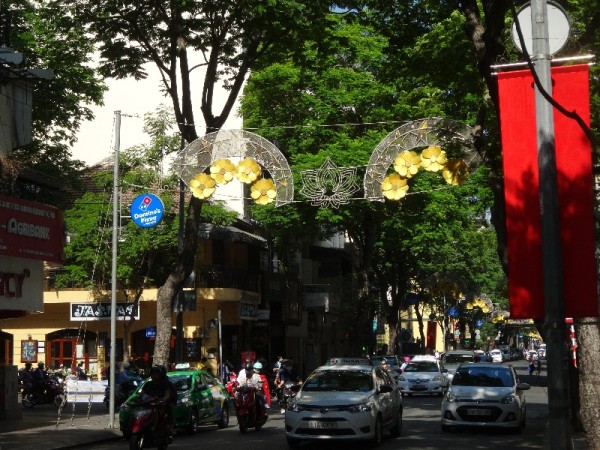
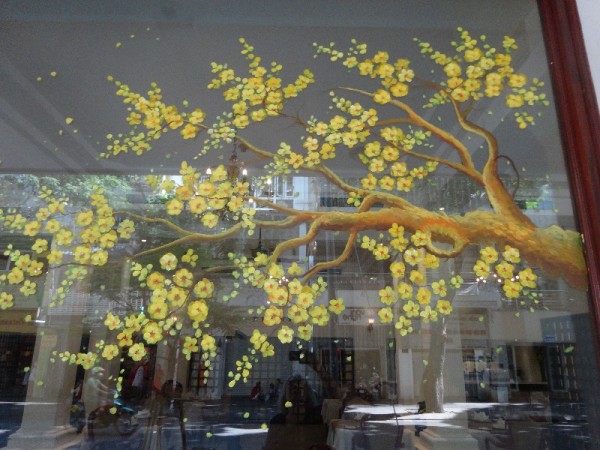
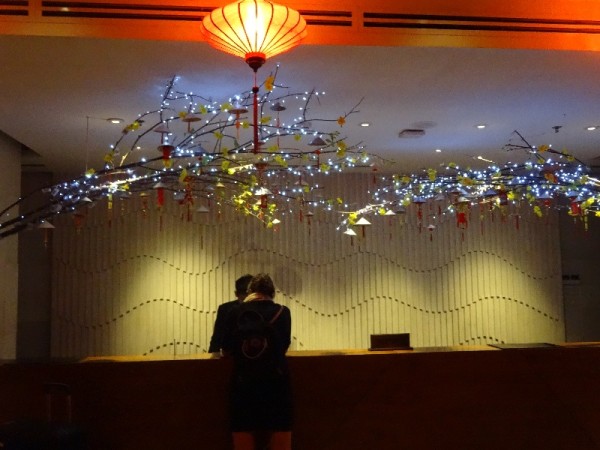
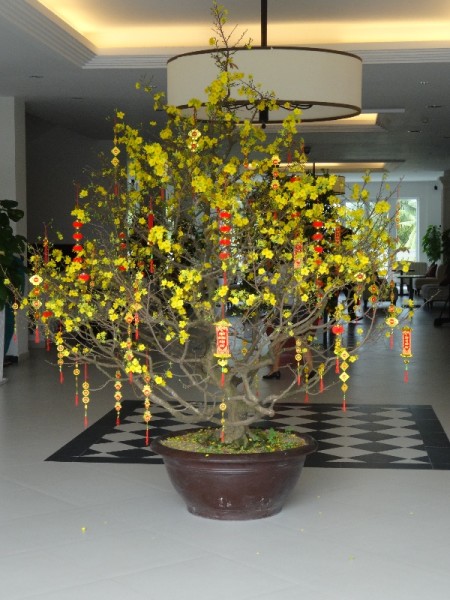
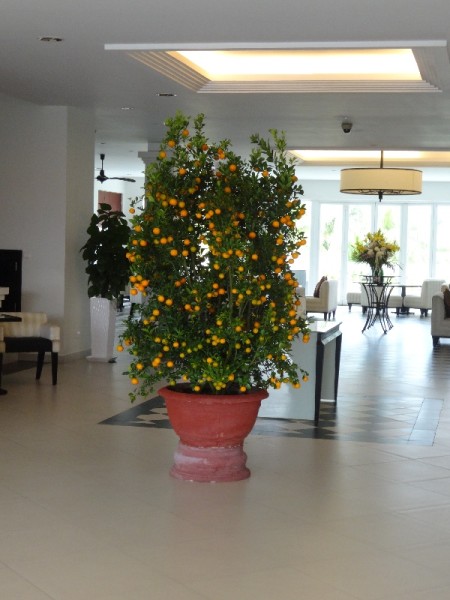
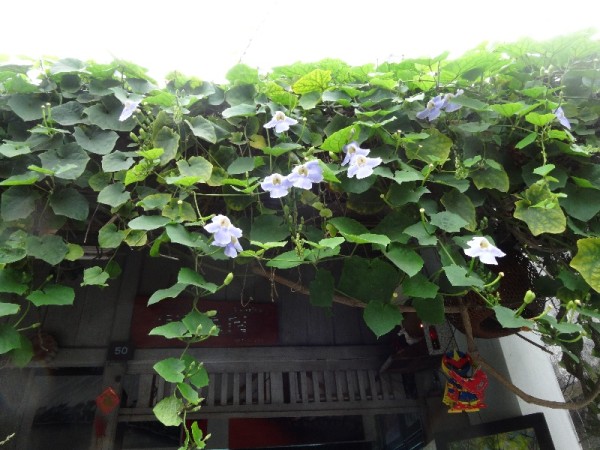
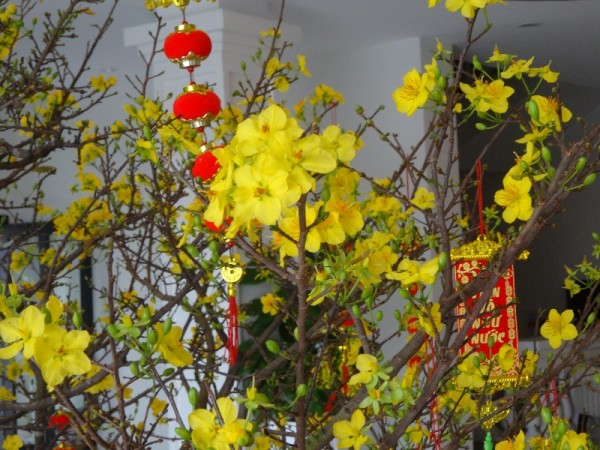
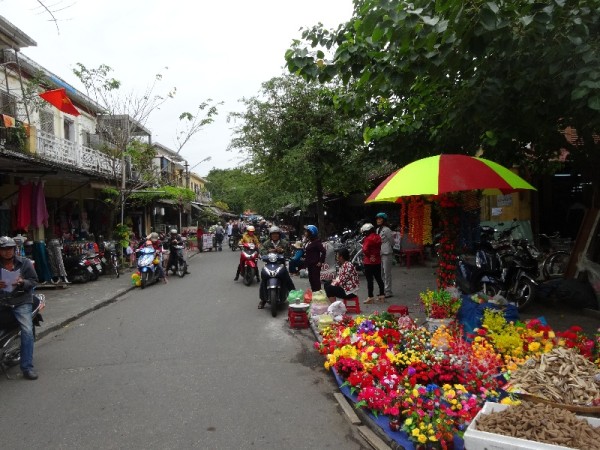
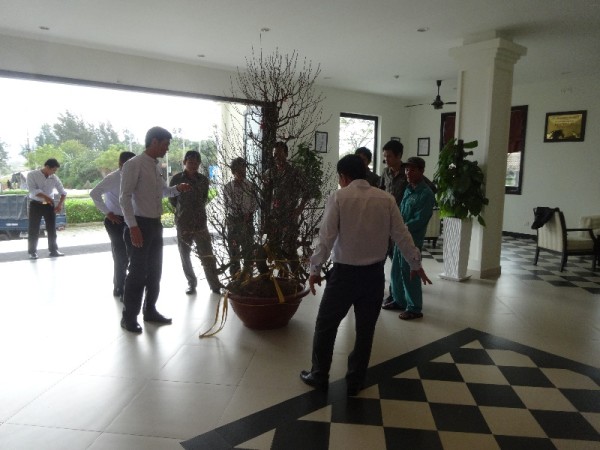
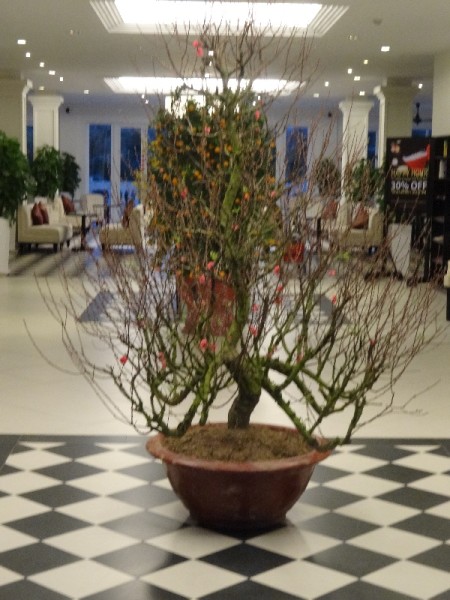
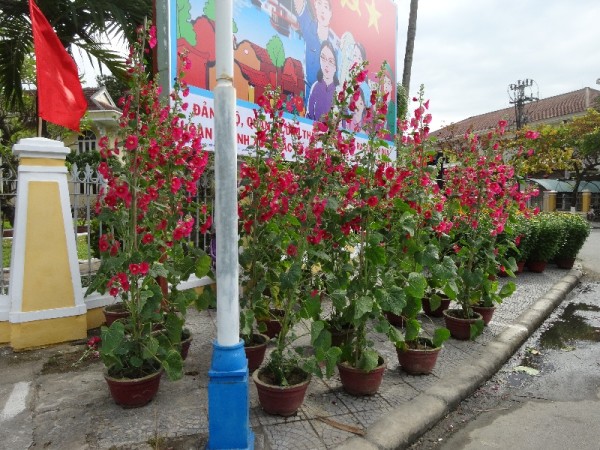
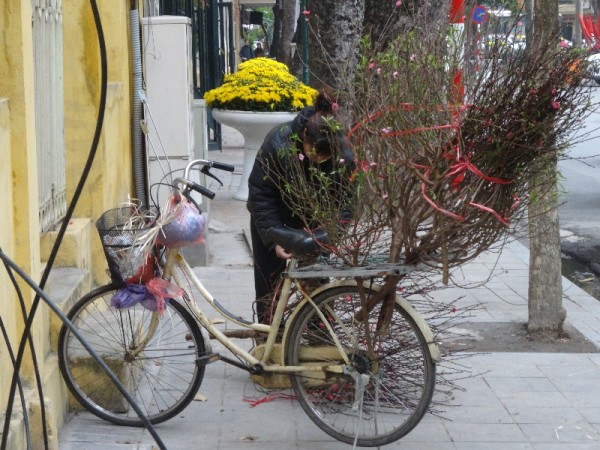
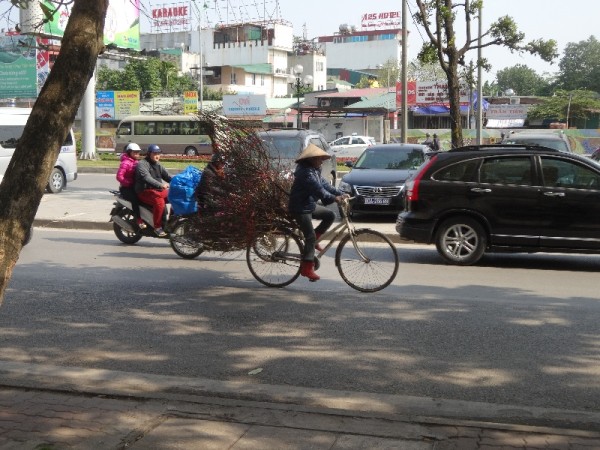
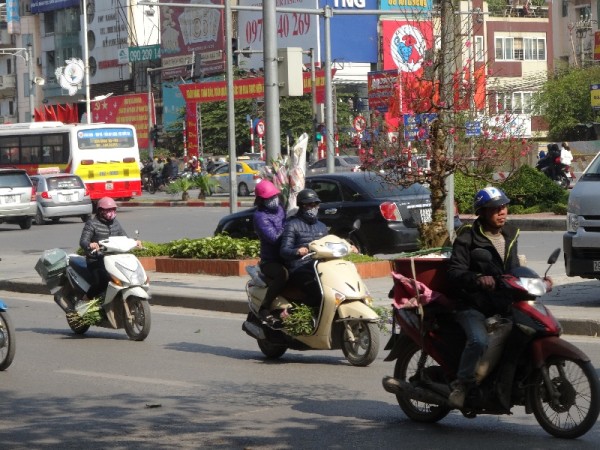
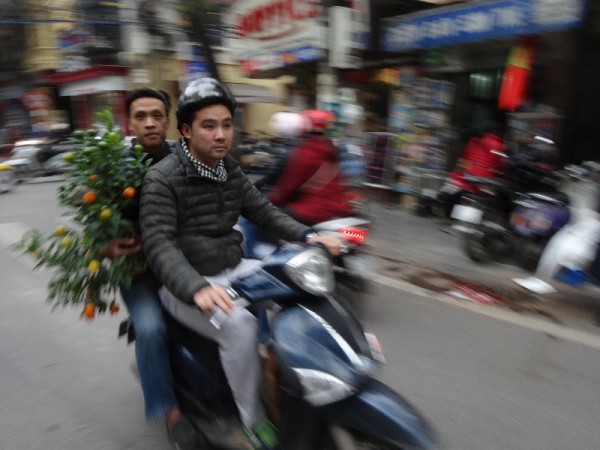
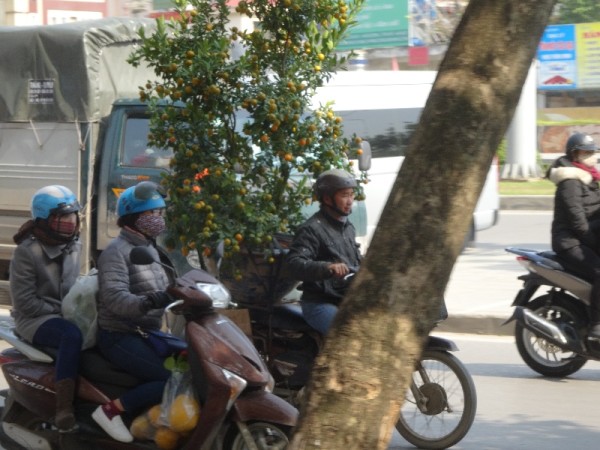
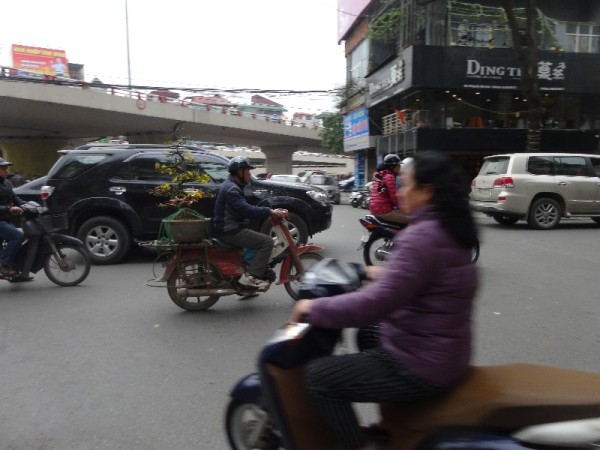
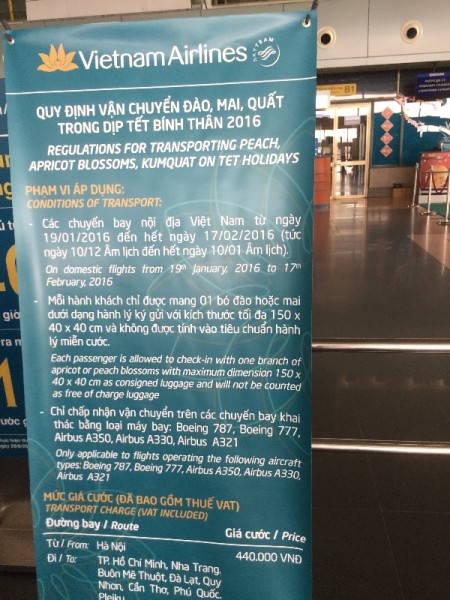
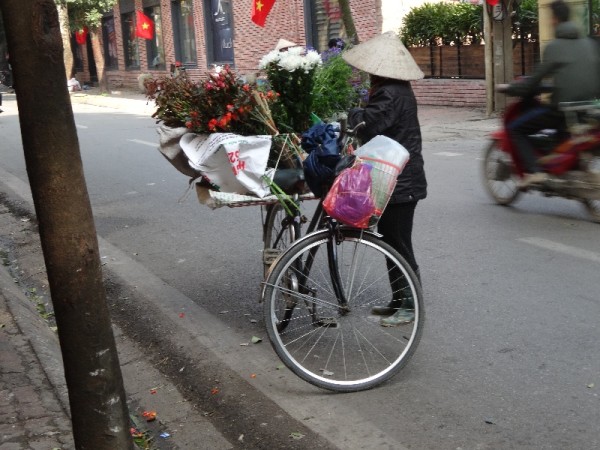
16 Comments
Fabulous adventures and a history update as well – a real treat!
Thank you for being so positive about having a brief history lesson tacked on the end Rachel.
Great post and I think you are justified in the use of an occasional exclamation point! (There’s another to keep yours company) I had never heard of Tet before reading your post so you have educated as well as entertained. I hope you show us in a future post the ginger jars and of course the elephant lamp (am inwardly giggling at the thought of how very lumpy your hand luggage must have been, not to mention heavy) x
It was just so delightfully strange to travel half the world and encounter something so delightful as Tet trees – we love our Christmas trees but I could happily embrace a nice little bonsai apricot for next lunar new year (mentally probably as I doubt I could afford the real thing). I’m glad you enjoyed hearing about them, Penny.
I should have photographed the ginger jars in the shop as once bought they became encased in acres of bubble wrap, and some of them were consigned to the depths of tin trunks in which they are to make their journey to the UK – at some unspecified point in the future. But I shall try to photograph them as and when they reappear.
Mary, I’ve checked your blog every day since you left so lots of hoorays for you in giving us such a very exciting, informative as well as educational update on the Tet season when you must be over-tired and exhausted!!!!!! Perhaps too many exclamation marks but you’ve given us permission to let loose. Other ephemeral asides:
In 1968 I was a lowly typist (we weren’t allowed to call ourselves ‘secretaries’, the name being reserved for higher beings) in the Foreign Office in South East Asia Department and was well aware of the Tet offensive. Interestingly, these days some people still don’t realise the US withdrew strategically – and very quickly – from Vietnam. One cannot utter the phrase “lost the war” because the U.S. don’t.
Kumquats: I’ve never eaten these but, as a child brought up in Cape Town, I regularly had stomach ache from consuming far too many loquats. A neighbour’s tree bore down enticingly on our side every summer with very heavy crops of loquats which is perhaps a cross between an apricot and another fruit I still can’t decide on. In England, much later, I imagined kumquats might have a similar taste because they sounded similar – big disappointment.
Your posting, with photographs, is lovely but no mention of textiles or embroidery? Perhaps you’ll surprise us later.
And I find the phrases “apricot blossom” or “peach blossom” blissfully enchanting. Thank you, Mary.
How guilty I now feel to think of you checking my blog on a daily basis, particularly as I did say I would try to continue posting. Sorry, Penny.
Fascinating to think of you sitting at the sidelines of history and living with developments as things happened. I realised my memory of the Vietnam War was very bitty, so when I got home I did a bit of reading up to get events clearer. Strangely, I might not have bothered with such reading if I hadn’t been blogging. How ignorant is that? Instead, a little bit of effort has helped me get a perspective on events I lived through, so I’m very grateful to the blog.
How you surprise us Penny – not only with working in the Foreign Office but now with a childhood in Cape Town! Usually, kumquats look a bit like loquats but are not botanically related – apparently. Further, the kumquats seen in Vietnam were I think round kumquats (citrofortunella) which look more like Mandarin oranges – indeed that’s what we thought they were at first. (Put the search engines through their paces and you’ll see).
I hope to do more textile posts soon – still a bit jet lagged and sluggardly.
Chuc mung nam moi! Thank you for sharing your trip with us!
Very pleased you enjoyed coming along with me, Vivki.
I whispered a “Hurray” when I saw that you had posted. So happy to hear about your trip! Hope that you’ll share much more.
Lovely to hear such enthusiasm – even whispered. I hope to post much more soon.
Ooh, your post this morning was wonderful and so informative. I loved the photos of the various trees to celebrate Tet. I have one of those little red decorations (given to me by my manicurist years ago) that hangs in our living room to celebrate Chuc mung nam moi! Vietnam is such a beautiful country and I’m pleased you were able to enjoy it with your daughters.
So glad you enjoyed the post and our enthusiasm for celebratory trees which made me realised what little I know about the world. I too have had some of those little decorations without ever having realised their significance. Not only is Vietnam a fascinating place but her people are delightful too.
Wonderful account Mary, feel like I’m getting a second holiday of the year and it isn’t even March yet.
Isn’t it wonderful having an exotic holiday in January/February and coming back to the primroses being out and the evenings definitely lighter? Oh would that I could do this at this time every year – just after the fun of Christmas and when spring seems a long way off – I’m quite content to stay put in our lovely country for the rest of the year.
Dear Mary, looking for Tet postings, I just happened on your Vietnam travelog. Strange cross-link: I was in Vietnam with a medical team, not far from Hoi An, until 1975. Your travelog brought tears to my eyes. The Vietnamese pastor I worked with and I were both on the hit-list. However in 1975 it proved possible to re-establish them in the US, starting, impoverished, from scratch. Their family now includes six doctors. The eldest son continues his father’s vocation, at some risk, in supporting the yet opressed church in VN. If you were able to include them, albeit unnamed, in intercession,we would be most grateful.
Blessings,
Michael
How fascinating. Thank you for letting me know. I’m not clear which church you refer to.
There does seem to be more religious tolerance in Vietnam now and interestingly the mother of one of my daughter’s colleagues has now returned to the Catholicism of her childhood and church has given her a new lease of life.